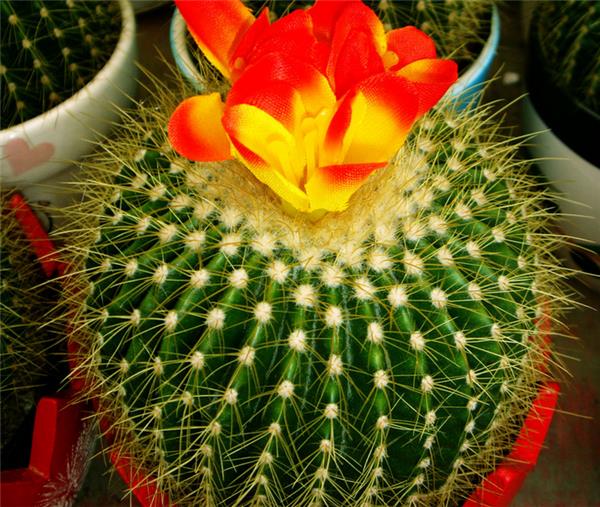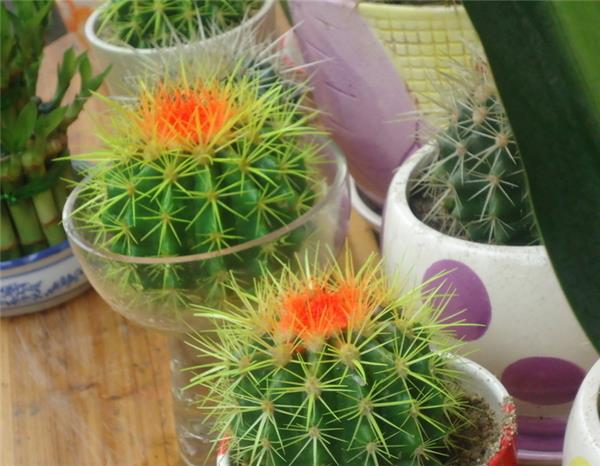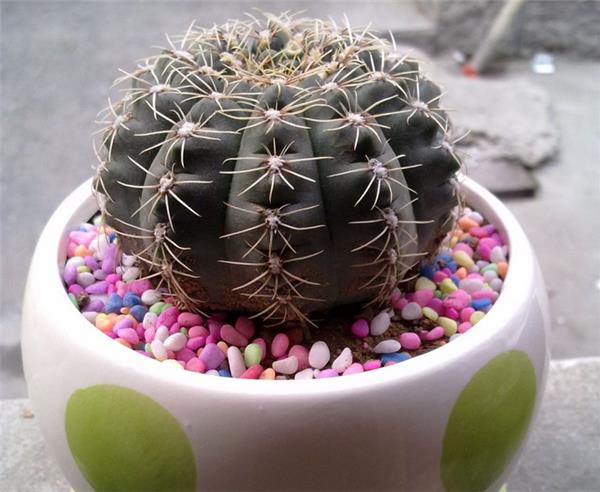How to raise cactus ball
Now, more and more people are raising green plants indoors to purify the air and decorate their homes, and cactus is very suitable for people who do not have time to take care of it, or very lazy people, but how to raise cactus?

How to raise cactus
1. Soil
Cactus is a desert plant, which is suitable for acidic and weakly acidic soil environment. And the cactus likes the sand, so you'd better prepare the sand, but the water in the sand evaporates quickly. In order to make the cactus grow better, you can put a layer of soil under the sand so that you can keep the water to a certain extent and avoid watering it every day. Because the root system of cactus is underdeveloped, the soil must be rich in organic matter and loose and breathable. Generally, humus soil exposed to the sun for 2-3 days is used to add phosphorus and potassium fertilizer, and calcium superphosphate lkg and potassium phosphate 0.5kg are generally mixed per 50kg basin as base fertilizer.
2. Lighting
Cactus is a plant that likes sunlight very much, but it should also be shaded if the temperature exceeds 36 degrees Celsius. Cactus is not suitable for long-term display in the indoor environment, so it is easy to cause the cactus to turn black, usually every month or so, put it in the outdoor sunshine for 2 to 3 days, and then move back indoors, pay attention to the sunny place indoors.
But can not be exposed to the sun, because exposure will slow down the growth rate of the cactus, of course, the cactus will not be killed, if you want the cactus to grow faster, you'd better find a shade for the cactus when the sun is too hot.

3. Moisture
The principle of watering is "dry rather than wet". Watering should not water the heart of the cactus. Generally, it is always watered every half a month in spring and once a week in summer, while the growth slows down in autumn and winter. Watering for more than 20 days is OK. It should be noted that it is best for Rain Water to water the flowers. If it is tap water, it is best to be exposed to the sun for two days.
But to avoid being drenched by rain, cactus is not afraid of no water, but afraid of too much water, too much water can make root cells die of hypoxia, so be careful not to let cactus get drenched in rainy days.
Because the vast majority of cactus flowers are native to the hot and arid desert wilderness of South and North America, the root system of cactus has a strong ability to absorb water, and it will fester if you water too much. Some large cactus balls will not die even if they are not watered for a year or two.
4. Fertilization
Fertilization is mainly phosphate fertilizer, one fertilization should not be too much, otherwise the concentration of soil solution will be higher than the concentration of cactus root cells, water outflow, resulting in the dehydration of cactus.
Taolai water can be put in a closed container for half a month, and then poured. This kind of rice water is rich in nutrients and weakly acidic, so it is very suitable for watering cactus. Topdressing should be carried out when necessary, usually every spring and summer, combined with watering with 1% potassium dihydrogen phosphate, 2 to 3 times a year.

5. Temperature
The optimum growth temperature of most cactus is 20-35 ℃. However, most species prefer large temperature difference between day and night, which is beneficial to the production and accumulation of organic matter under the condition of 35 ℃ in the day and 15 ℃ at night, thus promoting the exuberant growth of the plant.
6. Change the basin and soil
Generally speaking, when the cactus grows in the basin for 2 to 3 years, the nutrients of the soil will be confirmed, and it will also cause the consolidation of the cultivated soil, so it is time to change the basin. Carefully remove the cactus from the original flowerpot, put some fragments at the bottom of the new flowerpot to facilitate drainage, and then fill in the culture soil configured in the first step until 1max 3. With hand compaction, gently put the dug cactus (to cut off the rotten roots and diseased roots), fill in the culture soil around, gently lift the cactus, to facilitate the extension of the root system, and finally fill in the remaining culture soil and compaction.

7. Diseases and insect pests
The diseases and insect pests of cactus are mainly anthracnose, canker, scale insects and whitefly, mainly to control moisture, timely ventilation and prevention. Carbendazim has a certain effect on anthrax, streptomycin is more effective for canker, but mainly prevention.
Related
- Wuhan Hospital Iron Tree Blooming Result Was Instantly Frightened by the Gardener Master
- Which variety of camellia is the most fragrant and best? Which one do you like best?
- What is the small blue coat, the breeding methods and matters needing attention of the succulent plant
- Dormancy time and maintenance management of succulent plants during dormancy
- Minas succulent how to raise, Minas succulent plant pictures
- What are the varieties of winter succulent plants
- How to raise succulent plants in twelve rolls? let's take a look at some experience of breeding twelve rolls.
- Attention should be paid to water control for succulent plants during dormant period (winter and summer)
- Watering experience of twelve rolls of succulent plants
- Techniques for fertilizing succulent plants. An article will let you know how to fertilize succulent plants.



